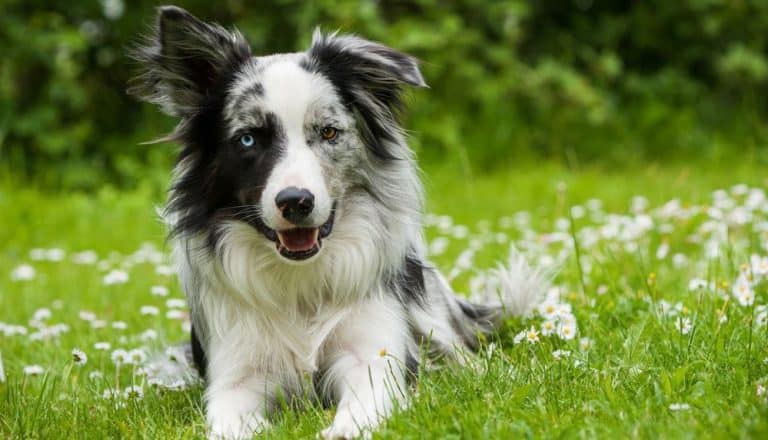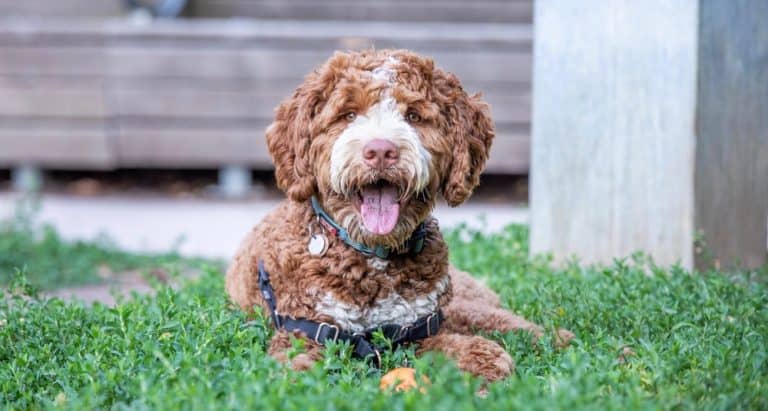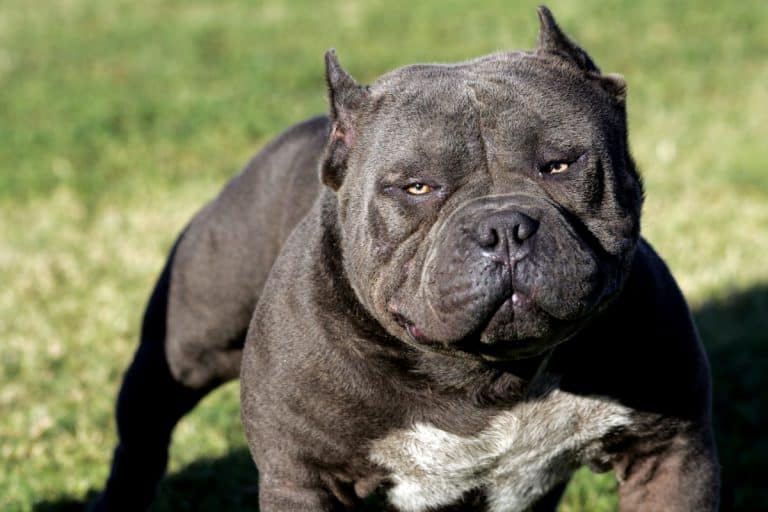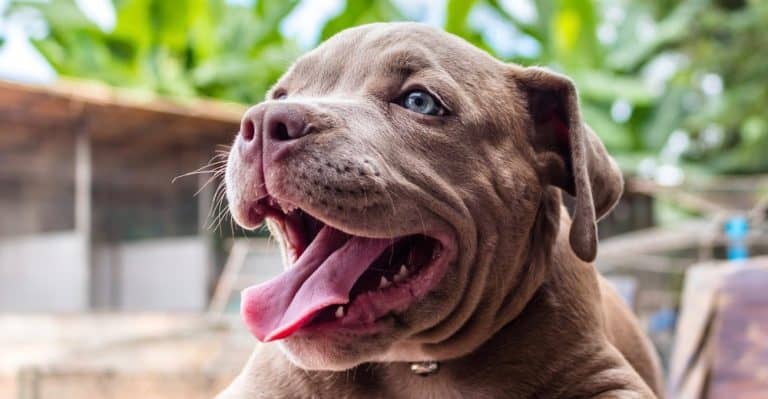When Do Blue Heelers Calm Down (At What Age)?
If you have been considering adopting a Blue Heeler, have previously owned one, or already have owned one, one of the biggest concerns that you will face is when do Blue Heelers calm down?
The breed has a reputation for energy and enthusiasm, which can be triggering or off-putting to some dog owners, so it is really important to know what you are getting into.
Regardless of the question as to when the dog will calm down, you have to accept up front that the breed is naturally energetic.
You cannot stop him from being energetic, but there are things that you can do to help keep you dog calmer.
Anything from socialization and exercise to good food and toys will help calm your dog down, but you have to know exactly what that should look like and how it will help.
Here is what we have found that can help you understand what to expect and know what to do.
What Age Do Blue Heelers Calm Down?
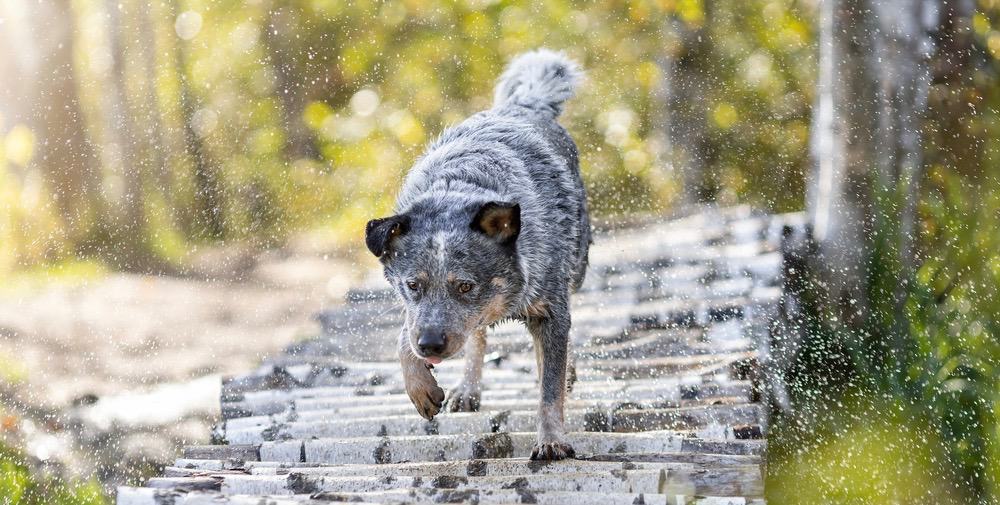
Naturally, the biggest question on your mind is when do Blue Heelers calm down? Unfortunately, you might not like the answer.
While hoping that biding your time patiently will serve you well, your Blue Heeler may not calm down until he is between 4 and 6 years old.
In fact, it is said that the breed calms down when they are older, slower, and approaching old age.
This does not mean that your dog is going to be a wild puppy until this age, but it does mean that his energy level is not going to taper off for years to come.
So if you are holding out on the hope that a Blue Heeler will calm down by the age of one, you will be disappointed.
Natural Instinct
It is important to acknowledge that the Blue Heeler breed does come with natural instincts that come out as having a lot of energy.
The first trait that you will notice is likely the reason that you are reading this article. The breed is high energy and hyperactivity is what might annoy you the most. This is because the breed is a working breed.
They have been bred with the natural instinct of working and tending to flocks or herds of animals.
Running all day and keeping track of other animals does require a lot of energy, but as the breed is now used less for its initial purpose, the energy is there without the job.
The other natural instinct that you need to be aware of is the tendency toward aggression. As Blue Heelers were bred to watch over animals and keep predators away, they are natural guard dogs.
They will growl at, attack, or nip at anyone who seems like they might be a threat to the dog’s family or land.
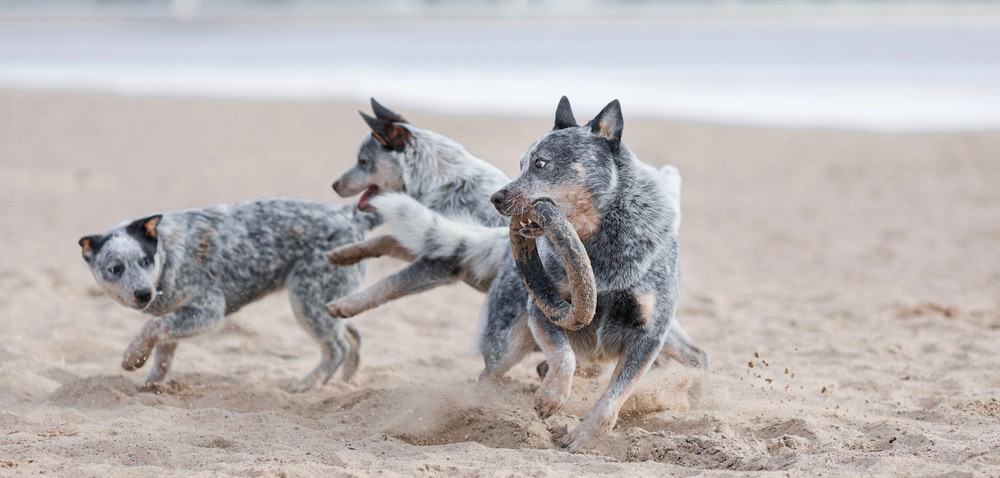
The dogs are naturally loyal and they want to keep you safe. Therefore, they will fight off anyone who seems threatening.
Knowing what the breed’s natural tendencies are does not mean that the dog can act like that freely. Instead, the dog needs to be trained to have a safe and active role in your life.
If the breed is not properly trained at a young age, they will not make good pets, and will instead be better off staying outside as guard dogs.
Am I Making The Situation Worse?
It is very easy to place all of the blame on your Blue Heeler’s tendencies on himself, but you have to ask yourself whether you are at least partly to blame.
What is the environment of your home and how is your pup living each day?
Keeping a peaceful and loving environment will not completely alter your dog’s personality, but it will help provide him with a sense of calm rather than exacerbating his behaviour.
Make sure that when you are playing with your dog, whether it is just tug-of-war or catch, you take it outside.
If you have young children who are rowdy and loud, or even other dogs, they might rile your Blue Heeler up, making it harder for him to self-regulate to the point of calming down.
That does not mean that if you have a totally quiet home that is serene, you will get a calm Blue Heeler. Your dog is still your dog, but he will be much worse off in a loud and crazy environment.
What Can I Do To Help?
Beyond having a nice, calming environment, and simply waiting for the time when Blue Heelers do calm down, there are a few other things that you can do to help your dog along the way.
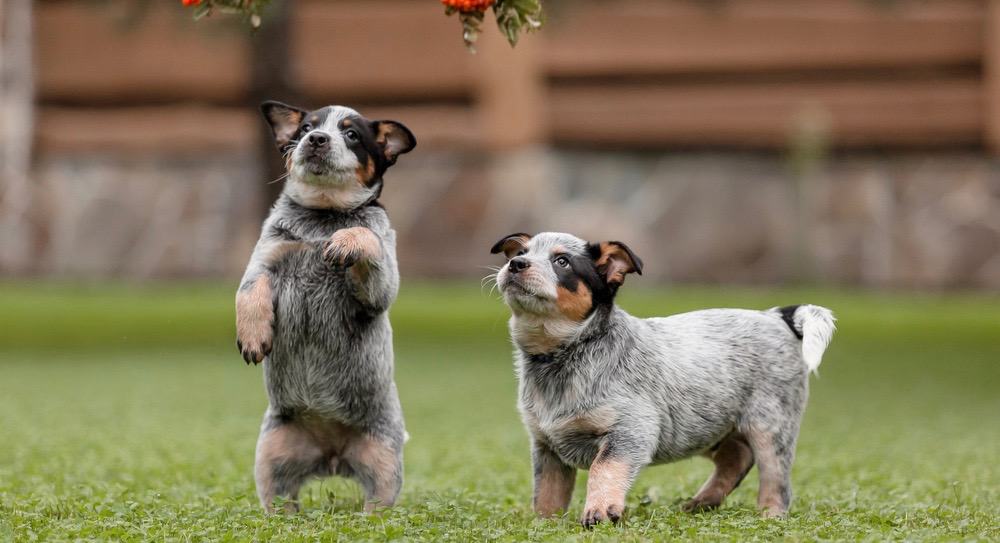
Socialization
One of the best things that you can try to do is socialize your dog. Socializing means exposing your dog to other dogs and humans in a controlled environment.
This is much easier if you already have other dogs that your dog can learn from, but getting your Blue Heeler socialized will help a lot when it comes to behaviour.
Dogs are social, pack animals. They like to be with humans, but also do well with other dogs.
The earlier that you socialize your puppy and help him learn how to behave around other dogs and in general, the sooner your dog can learn boundaries and what good behaviour should look like.
Professional Training
While many dog owners have the best intention to train their dogs, it is really important to get it right when it comes to Blue Heelers.
They really do want to please you and when they have been trained well, they will remember that training forever.
When your dog has been professionally trained, he will learn to sit and come when told to do so.
It might not prevent his natural will to be wild and playful, but it can help him learn to behave when he is asked to. They are a smart breed and they can learn how to not cause mayhem.
Exercise
Taking dogs on walks and playing with them is important, regardless of the breed, but it is essential when it comes to Blue Heelers.
They are riddled with energy, which can easily convert toward anxiety. Anxious dogs are not just unhappy, but they quickly become destructive and difficult to live with.
Make sure that you can keep your dog well-exercised. This can mean a lot of different things, anywhere from taking your dog for multiple walks a day to playing a game of Frisbee outside.
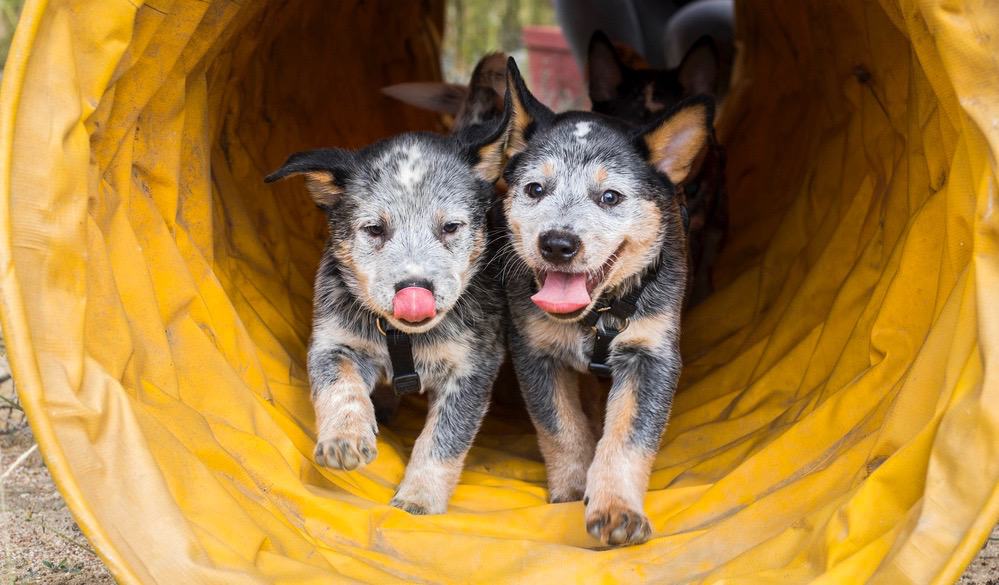
Since the dogs are natural herders, if you can get him with a group of livestock to work out that kind of energy, it would be ideal, but not all Blue Heelers are ranchers, so naturally there are many other types of exercise that you can try out.
Taking your dog to a dog park is also an excellent way to burn out that excess energy. This is really important if you live in an apartment or a house without a yard.
A dog park provides the space for dogs to run as wildly as they need to and, provided that they have been socialized, the dogs will have someone else to run and play with.
It helps with energy and will also help with your dog’s emotional well-being.
Note on walking
It is really important that you teach your Blue Heeler puppy to walk on a leash properly. He will need to learn to not pull on the leash and will need to practice sitting while walking when asked.
That will prevent him from bolting after anything that might catch his eye and drive him to chase.
When your dog goes through obedience school, he should learn to sit, stay, and come, all of which are vital to know when you are taking him out for walks. It will save you a lot of headaches in the future.
Invest in good toys
When your pup is cooped up at home, that is when he is likely to get into the most mischief.
This would be when there isn’t anyone to entertain him and with the energy level that comes with a Blue Heeler, he might find himself some things to chew on to express any anxiety and energy.
For this reason, we suggest in investing in good toys. By this, we mean toys that will not be destroyed easily and can actually keep your dog occupied for a long period of time.
Toys that have a game element to them, where the dog has to work it out to get a treat out, are going to be the best thing to keep your dog occupied.
Additionally, getting toys that will not completely collapse at first bite is also very important.
Squeaky toys are a favourite of many dogs, but they will concentrate on getting to the squeaker inside of the toy, destroying it rather quickly and leaving you with both a mess and a dog who is not currently entertained.
Look at his food
Not all dog foods are appropriate for all dog breeds. Even foods that will advertise themselves as being grain-free or all-natural may not serve your dog well at all.
Different breeds have different dietary needs, so when it comes to Blue Heelers, you should be looking for food that will not make him more amped up, but instead, look for foods that should help him wind down.
Looking at your dog’s food’s label, look at what the contents are.

Foods like fat and protein, while generally good for dogs, are likely to increase a dog’s overall energy level, rather than helping you tamper it back down.
The word “calorie” literally refers to a measurement of energy, so the higher the calorie food that you give your dog, the more energy your dog is likely to have.
Make sure that you are using a food that is low in calories, but also high in vegetables. Foods with green beans or carrots in them are a better alternative than foods that are packed full of calories.
You can even feed your dog the vegetables straight up, improving his health and his diet.
How To Prevent Your Herding Dog From Herding You
Any cattle dog owner can probably say the same thing: at some point, a herding dog is going to herd humans. A Blue Heeler’s natural inclination will be toward herding, regardless of the animal type.
If you are standing in a room with other people and no one is near each other, a herding dog will naturally start to circle you, perhaps even nipping at your heels, in the goal of getting you to move closer to each other.
Luckily, there are some things that you can do to help with this natural behaviour. These including:
Socialization: As we mentioned above, socializing your pup will help keep him calm, but it can also help with those natural behaviours and prevent any attack-like behaviour.
Obedience Training: Obedience training is the other thing that you can do to help avoid that herding tendency. It will also help them calm down, but will help train that instinct to herd you out of them.
Know What You Are Getting Into
When it comes down to it, Blue Heelers are energetic dogs. They have a natural inclination toward herding and need to release their energy so that they do not develop anxiety.
Pent-up energy will cause issues for your dog and result in you having a harder time with them.
If you do not feel like you are prepared to manage the behaviours that can come from a naturally energetic dog, Blue Heelers might not be the right choice for you.
If you have already adopted one and are constantly asking yourself “when do Blue Heelers calm down,” you need to learn to manage your dog’s energy level, but also understand that you cannot get rid of it.
Blue Heelers are a fun and loyal dog breed and make wonderful pets for homes that will help them learn to manage their energy.


